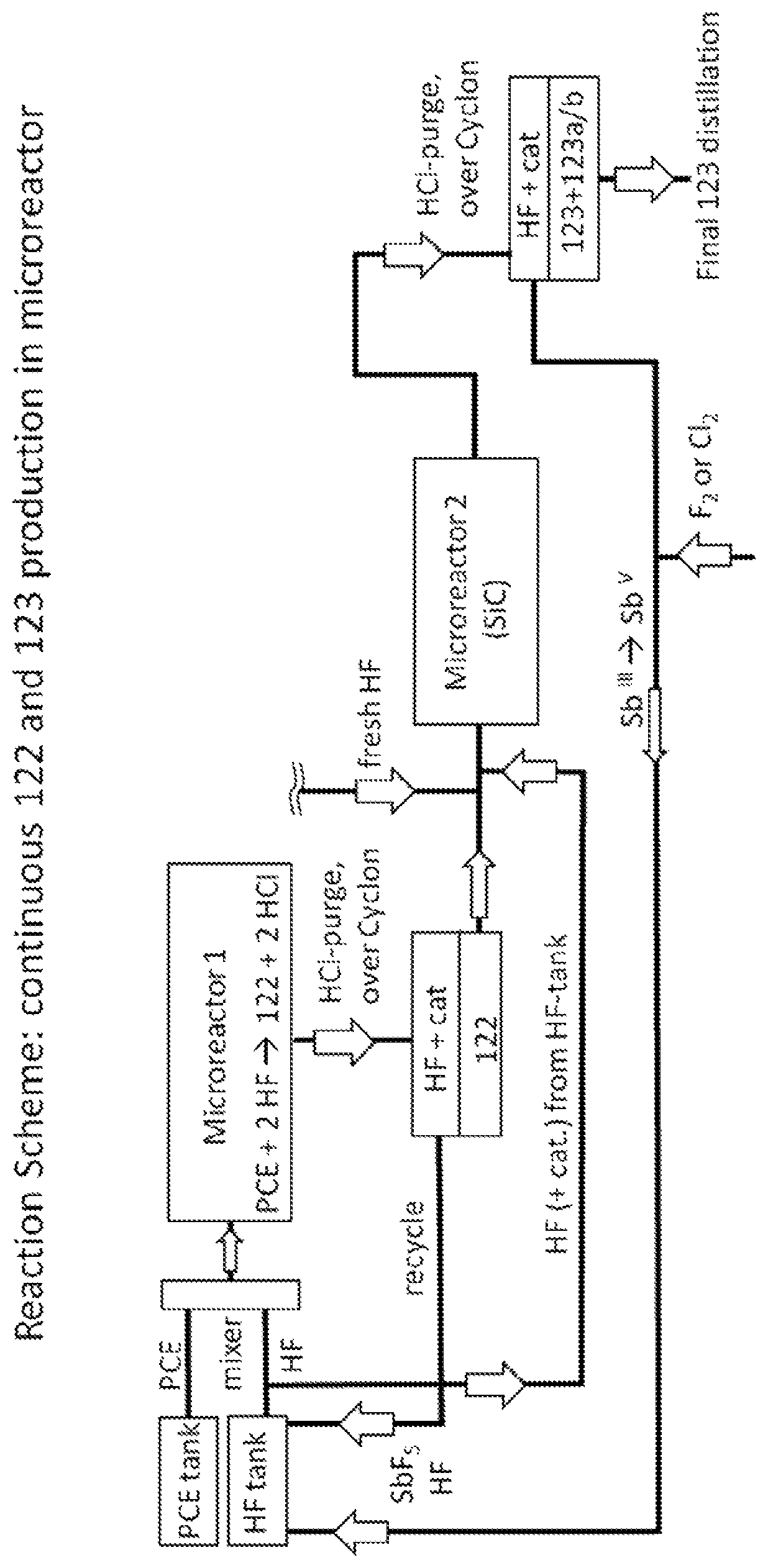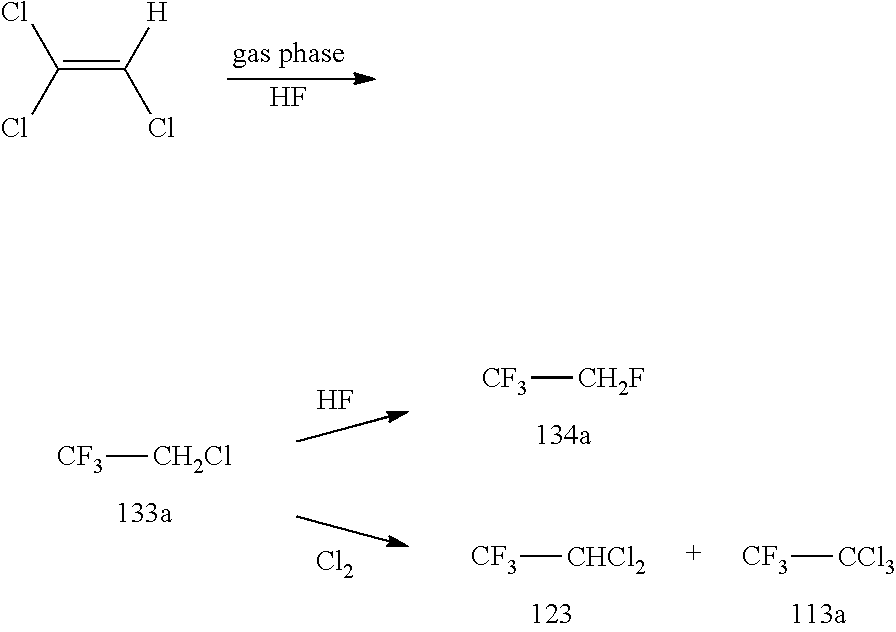Process for the manufacture of 2,2-dichloro-1,1,1-trifluoroethane (HCFC-123) and/or HCFC-122 (1,1,2-Trichloro-2,2-difluoroethane)
a technology of trifluoroethane and hcfc122, which is applied in the field of process for the manufacture of 2,2-dichloroethane and/or hcfc123, which can solve the problems of loss of yield, low yield, and low known method efficiency, so as to achieve reduced number of separation steps and simplified
- Summary
- Abstract
- Description
- Claims
- Application Information
AI Technical Summary
Benefits of technology
Problems solved by technology
Method used
Image
Examples
Embodiment Construction
[0040]In the following, the invention is more particularly described in the context of using a microreactor. Preferentially, a microreactor used according to the invention is a ceramic continuous flow reactor, more preferably aSiC (silicon carbide) continuous flow reactor, and can be used for material production at a multi-scale. Within integrated heat exchangers and SiC materials of construction, it gives optimal control of challenging flow chemistry application. The compact, modular construction of the flow production reactor enables, advantageously for: long term flexibility towards different process types; access to a range of production volumes (5 to 400 l / h); intensified chemical production where space is limited; unrivaledchemical compatibility and thermal control.
[0041]Ceramic (SiC) microreactors, are e.g. advantageously diffusion bonded 3M SiC reactors, especially braze and metal free, provide for excellent heat and mass transfer, superior chemical compatibility, of FDA cer...
PUM
| Property | Measurement | Unit |
|---|---|---|
| pressure | aaaaa | aaaaa |
| wavelength | aaaaa | aaaaa |
| diameter | aaaaa | aaaaa |
Abstract
Description
Claims
Application Information
 Login to View More
Login to View More - R&D
- Intellectual Property
- Life Sciences
- Materials
- Tech Scout
- Unparalleled Data Quality
- Higher Quality Content
- 60% Fewer Hallucinations
Browse by: Latest US Patents, China's latest patents, Technical Efficacy Thesaurus, Application Domain, Technology Topic, Popular Technical Reports.
© 2025 PatSnap. All rights reserved.Legal|Privacy policy|Modern Slavery Act Transparency Statement|Sitemap|About US| Contact US: help@patsnap.com


